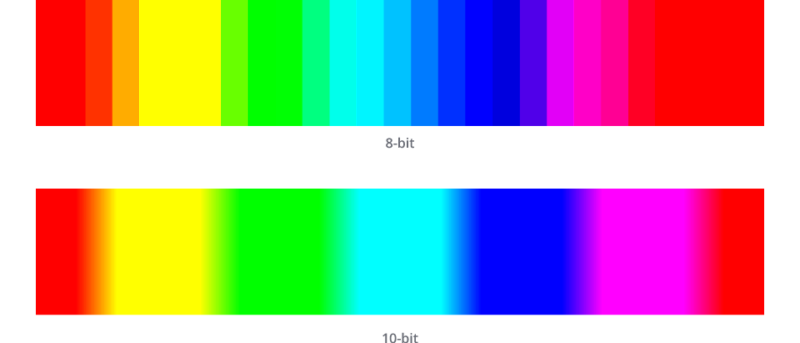Depth images are widely used in fields such as computer vision, 3D modeling, and robotics to represent the distance of objects in a scene. These images encode information about the depth of each pixel, giving us a sense of how far or close objects are from the camera. Converting depth images to PNG format is a practical way to preserve this data while ensuring the image is both high-quality and easy to share or store. In this post, we'll explore why converting depth images to PNG is important and how you can do it efficiently.
What Are Depth Images?
Depth images, also known as depth maps, are visual representations of the distance between objects in a scene and the camera. Unlike regular images, where color pixels represent various hues, depth images use pixel values to indicate how far each point is from the camera. These images are often grayscale, where lighter values represent closer objects, and darker values signify objects further away.
Depth images are used in a variety of applications, such as:
- 3D modeling and rendering: Helps create 3D objects or environments from real-world data.
- Robotics: Used for obstacle detection and navigation in autonomous systems.
- Virtual and augmented reality: Enhances immersive experiences by understanding the spatial layout of real-world objects.
- Medical imaging: Assists in creating accurate models of human anatomy.
These images can be captured using specialized sensors like LiDAR, stereo cameras, or structured light scanners. The resulting depth data is crucial for understanding the spatial relationships in a scene.
Also Read This: How to Layer Images for Stunning Designs
Why Choose PNG Format for Depth Images?
When dealing with depth images, choosing the right file format is key to ensuring that data is preserved accurately and efficiently. PNG (Portable Network Graphics) is a popular format for depth images because of its many benefits. Here's why PNG is a great choice:
- Lossless compression: PNG uses lossless compression, meaning that no image data is lost during the compression process. This ensures that the depth information remains intact and precise.
- Transparency support: PNG supports transparency, which can be useful when overlaying depth images onto other layers or backgrounds.
- Wide compatibility: PNG is universally supported across different platforms, devices, and software, making it easy to share depth images without worrying about compatibility issues.
- High-quality output: Since PNG doesn’t lose quality through compression, the image retains its detail, which is especially important for depth maps where subtle changes in pixel values matter.
While other formats, like JPEG, may offer smaller file sizes, they use lossy compression, which can degrade the quality of depth data. For this reason, PNG is typically the preferred choice when high-quality, accurate depth images are needed.
Also Read This: how to cancel adobe stock membership
Steps to Convert Depth Images to PNG Format
Converting depth images to PNG format is relatively simple and can be done using various tools, whether you're working with a single image or batch processing multiple files. Here's a straightforward guide on how to convert your depth images to PNG:
- Step 1: Choose Your Tool – First, select a conversion tool or software that suits your needs. There are plenty of free and paid options available.
- Step 2: Load Your Depth Image – Open the depth image file you want to convert. Ensure the image is in a compatible format such as TIFF, BMP, or RAW.
- Step 3: Adjust Image Settings (Optional) – Before conversion, you may want to adjust settings like brightness, contrast, or resolution to ensure the output image looks just right.
- Step 4: Convert to PNG – Choose the option to save or export your file as PNG. If using a batch processing tool, select the destination folder for all converted images.
- Step 5: Check Output Quality – After conversion, review the PNG file to make sure all depth information is preserved accurately.
With these easy steps, you can ensure your depth images are successfully converted to the high-quality PNG format, ready for use in your projects or for sharing with others.
Also Read This: Compressing Images on Mac for Storage Efficiency
Tools for Converting Depth Images to PNG Format
There are several tools available for converting depth images to PNG, each offering a variety of features depending on your specific needs. Here are some popular options:
- Adobe Photoshop: A powerful image editing software that can handle depth images and convert them to PNG with full control over image settings.
- GIMP: A free, open-source image editing tool that supports depth image conversion to PNG format, offering a user-friendly interface.
- ImageMagick: A command-line tool that allows batch processing and scripting for image conversion, perfect for users who need to convert many files at once.
- Online Converters: Websites like Convertio or Online-Convert.com offer quick and easy conversions of depth images to PNG directly in your browser without the need to install any software.
- Depth Map to PNG Converter (Specialized Software): Some software tools are specifically designed for handling depth images, such as DepthMap.io, which can easily convert depth maps to PNG.
Each of these tools offers its own set of features and advantages, so consider your specific needs, such as batch processing or the level of image control you require, when choosing the right tool for the job.
Also Read This: How Behance Got Its Name
Common Issues When Converting Depth Images
While converting depth images to PNG format is generally a straightforward process, several common issues can arise. Here are some challenges you may encounter and how to address them:
- Loss of Depth Data: Some tools may not handle depth information correctly, causing a loss of critical details during conversion. Ensure the tool you’re using preserves the depth data by checking settings and selecting the correct input format.
- File Size: Depth images can be quite large, and PNG files, while lossless, can also have significant file sizes. If you’re working with a large dataset, consider compressing the PNG files or reducing the resolution before saving.
- Compatibility Issues: Some depth images may not be compatible with all image conversion tools. If you encounter issues, try converting the file into an intermediate format (like TIFF) before converting it to PNG.
- Color Representation: Depth images are typically grayscale, but sometimes a tool might interpret depth data as color information, affecting the image’s accuracy. Make sure the software is configured to treat the depth values as grayscale before conversion.
- Loss of Precision: While PNG is a lossless format, some tools may still introduce subtle changes to the image, affecting depth precision. Always check the converted file to ensure no data has been altered during the conversion process.
By being aware of these potential issues and taking steps to mitigate them, you can ensure that your depth images are converted to PNG without any loss of critical data or quality.
Also Read This: How to Create a Profile on Behance for Your Personal Creative Portfolio
How to Optimize PNG Depth Images for Web Use
Optimizing PNG depth images for web use is crucial for improving load times and performance, especially when dealing with large or high-resolution files. While PNG is known for its high-quality, lossless compression, its file sizes can still be large. By following a few key optimization strategies, you can significantly reduce file sizes without compromising image quality. Here’s how to optimize your PNG depth images for faster web loading:
- 1. Resize the Image: One of the easiest ways to reduce the size of a PNG image is by resizing it. If the depth image is larger than necessary, consider resizing it to fit the exact dimensions required for the web page.
- 2. Use PNG Compression Tools: Tools like PNGGauntlet, OptiPNG, or online services like TinyPNG can compress PNG files while preserving the image quality. These tools remove unnecessary metadata and apply advanced compression algorithms to reduce file size.
- 3. Simplify Image Details: Depth images can sometimes include excessive detail that isn’t essential for web use. If possible, consider reducing the image depth or simplifying the range of grayscale values to make the image smaller without affecting its key details.
- 4. Convert to 8-bit PNG: If the depth image doesn't require a full 16-bit depth of information, converting it to an 8-bit PNG can significantly reduce file size. This can be especially useful for images that don’t need high precision.
- 5. Use Image Sprites: For websites using multiple depth images, consider combining them into an image sprite. This reduces the number of HTTP requests, improving page load speed.
By implementing these optimization techniques, you can ensure that your PNG depth images load quickly while maintaining their quality for web use.
Also Read This: Guide to Uploading High-Quality Videos on YouTube
FAQ
Here are some frequently asked questions about converting and optimizing depth images for PNG format:
- Q: Can depth images be saved in other formats besides PNG?
A: Yes, depth images can be saved in other formats like TIFF or BMP, but PNG is preferred due to its lossless compression and wide compatibility with web applications. - Q: Why do PNG files sometimes become large even after optimization?
A: PNG files can remain large due to the complexity of the depth data. To reduce file size further, try simplifying the image or converting to a lower bit-depth format like 8-bit PNG. - Q: How can I batch convert depth images to PNG?
A: Tools like ImageMagick or GIMP allow for batch processing, enabling you to convert multiple depth images to PNG in a single operation. Many online converters also support batch processing. - Q: Are there any quality losses when converting depth images to PNG?
A: No, PNG is a lossless format, meaning no image quality is lost during the conversion. However, some depth maps may lose some precision if the conversion tool is not set up correctly. - Q: How can I check if the depth data was preserved during conversion?
A: After converting your depth image to PNG, inspect the image by comparing it with the original. Ensure that the depth information, represented by the grayscale values, remains intact without distortion.
Conclusion
Converting depth images to PNG format is an essential step for preserving high-quality, accurate data while making it suitable for various applications, from 3D modeling to web use. PNG's lossless compression ensures that depth information remains intact, making it ideal for professional work. However, optimizing these images for web use is equally important to ensure fast load times and improved performance. By resizing, compressing, and reducing bit-depth where applicable, you can achieve a balance between quality and performance. Always choose the right tools for conversion and optimization to ensure your depth images serve their purpose effectively on the web.

 admin
admin








